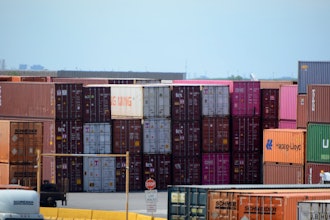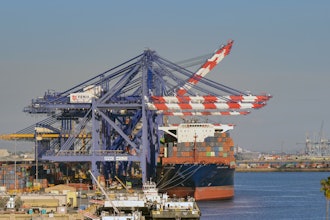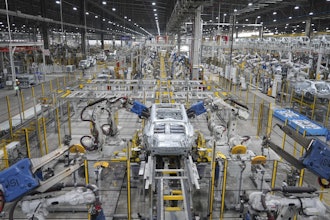
A port shuts down in Asia. A new regulation hits chemicals in your top product line. A key supplier folds. New tariffs are levied.
Distributors are under constant pressure: One disruption fades, and another appears. Supply chain failures are both operational headaches and business risks. They can mean lost revenue, frustrated customers, and long-term damage to your reputation.
Here’s where the strain is most visible:
Global trade disruptions
Tariffs and political tension can make suppliers hard to reach or more expensive to work with. Distributors are rethinking longstanding relationships, and some are scrambling for reliable alternatives.
Regulatory changes
Regulations tied to ESG and product traceability are more complex. Distributors must account for transparency across their supply chain while preparing for changing requirements in some markets. That also requires stronger data management, ensuring consistent, structured data on parts, suppliers, and processes across all systems.
Changing customer expectations
Customers expect more – faster. They want accurate delivery windows, real-time updates, and quick problem resolution. Falling short risks more than a complaint; they may switch suppliers.
Labor as a bottleneck
Workforce gaps put pressure on service and increase labor costs. Many distributors are looking closely at automation for repetitive tasks like purchase order approvals, inventory reordering thresholds, or shipment status updates to free up the team to focus on high-impact decisions. It also reduces delays caused by manual handoffs and gaps between departments.
Digitization gap
Distributors are feeling the pressure to digitize operations. Companies that use real-time data and automation are pulling ahead; those who delay are stuck reacting.
Distributors need to align operational flexibility with customer expectations and market fluctuations. Efficiency alone isn’t enough.
Here’s the playbook:
Build supplier diversity where you can. Expand your supplier base across regions and categories to prevent bottlenecks and give options when one path closes.
Strengthen supplier relationships. Build on trust rather than price alone. When disruption hits, strategic suppliers who see your business as a partner, not a transaction, are more likely to offer early warnings and priority allocation during shortages.
Invest in shared visibility. Not all suppliers respond the same under stress. That’s why distributors are starting to track vendor performance more systematically, including on-time delivery rates, quality issues, and responsiveness to disruptions. This helps them know who they can rely on when it counts. This data can inform better negotiations and more strategic sourcing. Collaboration tools that increase transparency also help everyone respond faster.
Use predictive analytics to stay a step ahead. Effective forecasting means more than looking at last year’s sales. Distributors are blending sales history, seasonal demand, promotional calendars, supplier lead times, and external market signals to generate more accurate, dynamic forecasts. When forecasts feed directly into procurement and replenishment workflows, companies can adapt faster and avoid excess stock or painful stockouts.
Balance inventory with buffer zones. Today’s systems can accurately forecast demand to maintain inventories while protecting against the unknown. Many distributors still operate with siloed systems that delay visibility into what's in stock, where it's located, or when it's arriving. A unified view across DCs and branches allows teams to reroute stock, allocate inventory more intelligently, and promise customers realistic timelines.
Modernize your tech stack. AI and cloud-based tools give teams the ability to coordinate faster, gain real-time visibility, and make smarter decisions under pressure.
Align your organization. Operational resilience requires synchronized action across sales, procurement, operations, finance, and IT. But in many distributors, these functions still operate in silos, each with different systems, KPIs, and workflows. That lack of alignment slows down response time, leads to conflicting priorities, and creates gaps in communication during critical moments. Companies need to treat resilience as a business-wide objective.
Together, these elements create a business that can flex under pressure and recover faster than competitors still operating with brittle supply chain strategies.
Resiliency isn’t a side project. Distributors that treat resiliency like any other performance driver track it, resource it and work to improve it quarter over quarter. That means setting clear metrics such as:
- lead time variability
- supplier risk exposure
- order accuracy during peak demand
- inventory turnover during disruptions
- SKUs with dual sourcing
- recovery time from a supply disruption
The most resilient distributors plan for disruption. They invest in flexibility, data transparency, and cross-functional alignment so they can adapt quickly when challenges arise. Resilience must be built into the way the business operates.
Jeremy Centner is the pre-sales solution architect director at Sikich on the Enterprise Technology team.






















